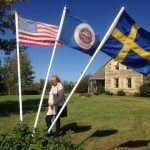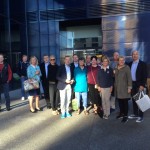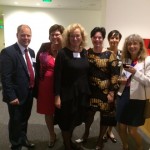I often speak of internationalization as a part of the process of quality development at Uppsala University. Internationalization is a broad and multifaceted term. It is good to widen your horizons, not only as a university, but also as an individual. We need to see how others do things, draw comparisons, adopt new perspectives, seek out inspiration and learn from others. These last few days have afforded ample opportunity to do all those things alongside a delegation from the University, Uppsala Municipality and Uppsala County, as we have spent them visiting Uppsala’s sister city, Minneapolis.
Here, we have met with the University of Minnesota to discuss innovation systems, and found ourselves impressed by their structured work in fundraising, internationalization and pedagogical development. We have had the great pleasure of meeting with President Kaler and several representatives of various parts of the University. In addition, we have also had the opportunity to learn about how the City of Minneapolis, the State of Minnesota and the University collaborate on different projects.
On Sunday, we went to see the Swedish settlements that inspired Vilhelm Moberg’s novel The Emigrants, and its tales of Karl Oskar and Kristina from Duvemåla. Our very own expert on Sweden-America relations, Dag Blanck, offered problematizing perspectives on the notion of Swedishness, identity and migration. This lent the trip additional depth and value.





A particularly rewarding part of the visit has been traveling with representatives of Uppsala Municipality, Uppsala County and Uppsala University. We have met with architects, arena owners, and city developers. This has provided enough inspiration for new collaborations to last us well after our return.
Our trip was fantastically well-coordinated by the American Swedish Institute. They have generously given us their time and knowledge. The institute also has very inspiring offerings of its own. Among them are a delightful museum that includes temporary exhibitions and a very good café – called “Fika”. If you ever find yourself in Minnesota, I highly recommend you to pay a visit to the American Swedish Institute, as it is absolutely worth it. The Institute works with modern-day migrants in an impressive way, such as a large group of Somalians. For instance, they tell the newly arrived Somalians of migrant Swedes’ experiences from more than a hundred years ago. It is a way of using the past to understand the present. For my own part, I believe our history as emigrants to the US can help us to better understand and deal with the current situation in Europe, as refugees flee war zones and brave great danger in search of better lives.
I personally hold the University of Minnesota and Minneapolis dear to my heart. I spent two years here as a postdoc. It was an edifying period of my life. But they are also dear to Uppsala University. Our Faculties of Law have enjoyed fruitful exchanges with one another in education and research for more than 30 years. Now, representatives of the Faculty of Law and I were given the chance to meet with Professor Bob Stein, who played an important part in initiating the exchange. It is inspiring to see glimpses of how new generations of researchers and teachers from both Uppsala and Minnesota will maintain and further our relationship in the future. That the exchange between our universities has meant a a great deal to many people was made evident during the visit. I was privy to a lot of testimony as to just how appreciated and important the exchange and collaboration has been to both students and teachers.
Today, a few members of the delegation are set to return home, while the rest will accompany me to Dartmouth, a partner university in the Matariki Network.
